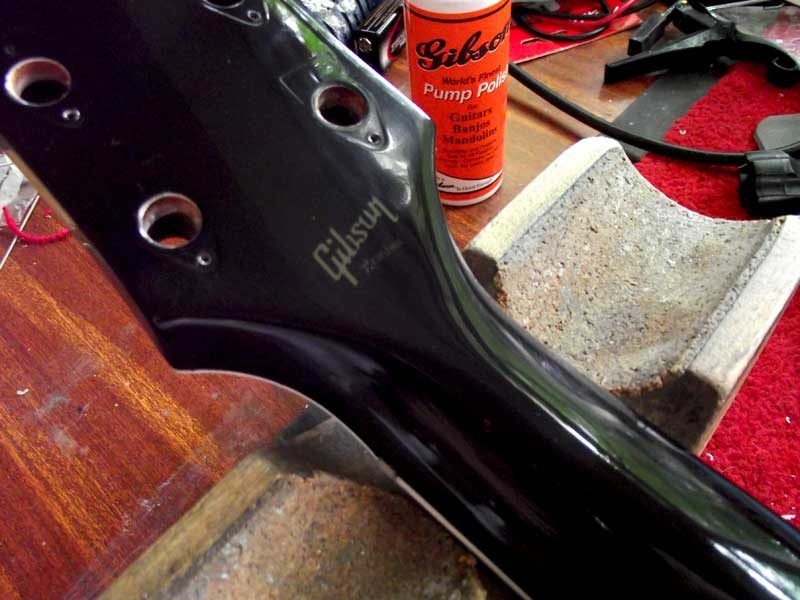
Gibson Les Paul Custom Headstock Repair

Here’s another Gibson Les Paul headstock repair, the second within the space of two days!
The owner of this guitar had left it in his rehearsal room and come back to find it broken. It was pretty clear from the break and other damage on the body that someone had taken the guitar out of its case and dropped it on its back.
Still, it’s as good as new now and I even managed to preserve the “Gibson Custom” transfer on the rear of the headstock despite it being very close to the break. Because the finish is opaque, there is no sign that the break ever occurred.
I did of course use my own black and clear gloss nitrocellulose lacquer aerosols which incidentally I have supplied to Gibson’s own repair shop for the same purpose!

What sealer you put on your repair, because Nitrocellulose always, cure, ?
Nitrocellulose doesn’t cure, it dries by evaporation and can always be reconstituted using a suitable solvent.
It does shrink as it dries though. I used my Cellulose Sanding Sealer which is high in solids so doesn’t shrink so much.
Would the nitro aerosol paint be suitable for an Epiphone Les Paul custom refinish? I have just done a backstrap repair but have bever repainted a black glossy neck before, wasn’t sure if they probably used a poly finish on the Epiphones.
Yes the Epiphone will have a synthetic polyurethane finish but you can still refinish using nitrocellulose.
I use plenty of sanding sealer to level the repair and then spray over with black where necessary followed by clear lacquer.
You might be able to feather the new finish smooth with the old, but it’s usually easiest to overspray the whole of the back of the neck and headstock to ensure a smooth seamless finish.
I have got Gibson Les Paul, roughly mid 1970s I’ve noticed a line appearing below the headstock on the back of the fret board could this be a split or superficial damage? Guitar still plays fine and holds its tuning.
How long have you owned it? It could just be lacquer cracks as the wood moves or it could be a previous repair that’s moving. I’d keep an eye on it and if it gets worse take it to an expert.
I’ve owned the guitar for forty years and it’s always been cased
.could it be anything to do with the truss rod?
Or possibly just the lacquer that’s cracked.
It’s impossible to say without seeing it but if the guitar has not been dropped it’s unlikely to be a break.
What year Les Paul is this ?? When did they put sticker on the volute ?? Thanks
I can’t remember sorry but it looks like mid 2000s.
It’s from a time when all Gibson Les Paul Customs were deemed to be Custom Shop products, hence the transfer.